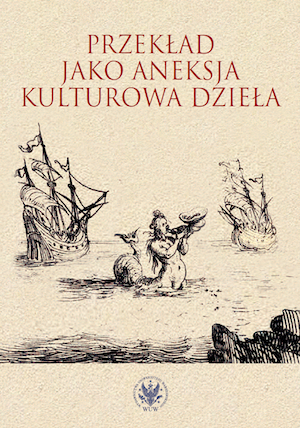W łańcuchu translacji: "Desiderosus" Kaspra Wilkowskiego
In the Chain of Translations: Kasper Wilkowski’s "Desiderosus"
Author(s): Mirosława Hanusiewicz-Lavallee
Subject(s): Cultural history, Studies of Literature, Polish Literature, Theory of Literature
Published by: Wydawnictwa Uniwersytetu Warszawskiego
Keywords: Desiderosus; Spill de la vida religiosa; translation; Wilkowski; literary sources
Summary/Abstract: The article analyses the Polish translation of the anonymous Catalonian mystical allegory "Spill de la vida religiosa" (1515) and its sources. The translation, authored by Kasper Wilkowski, a Catholic convert and a medic to Prince Mikołaj Krzysztof Radziwiłł, was published for the first time in 1589 as "Desiderosus abo ścieżka do Miłości Bożej i do doskonałości żywota chrześcijańskiego" [Desiderosus, or the Path to Divine Love and to the Perfection of Christian Life], gaining immediate popularity and three more editions before the end of the century. The existing scholarship knows it to be based on the Latin translation published in 1583 in Dillingen. However, that Latin edition lacked Part II of the original work, which included the discourse about contemplative prayer. Although Wilkowski openly declared in his preface that he also used handwritten materials, their nature has never been investigated. The authoress of the article argues that the unknown manuscript might have included a copy of the Italian translation of the "Spill de la vida religiosa", which allowed Wilkowski to add the missing part and to compile a text surprisingly faithful to the Catalonian original, in spite of some abridgements. In general, Wilkowski also managed to preserve the universalistic and the confessionally transparent character of the original work, which then inspired Orthodox Ruthenian translators. In 1625, a Ruthenian writer Kasjan Sakowicz republished Wilkowski’s Desiderosus, adding his own preface, in which he attested to the existence of some (today unknown) Ruthenian translations into ‘prosta mova’, one of which he had authored himself. It is therefore possible that the well known Church Slavonic translation of Desiderosus, written in 1688 by the archdeacon Theophan, could have been – as Mirosława Hanusiewicz-Lavallee argues – based not only on Kasper Wilkowski’s Polish version, but also rooted in this Kyivian Ruthenian tradition.
Book: Przekład jako aneksja kulturowa dzieła
- Page Range: 25-42
- Page Count: 18
- Publication Year: 2021
- Language: Polish
- Content File-PDF

